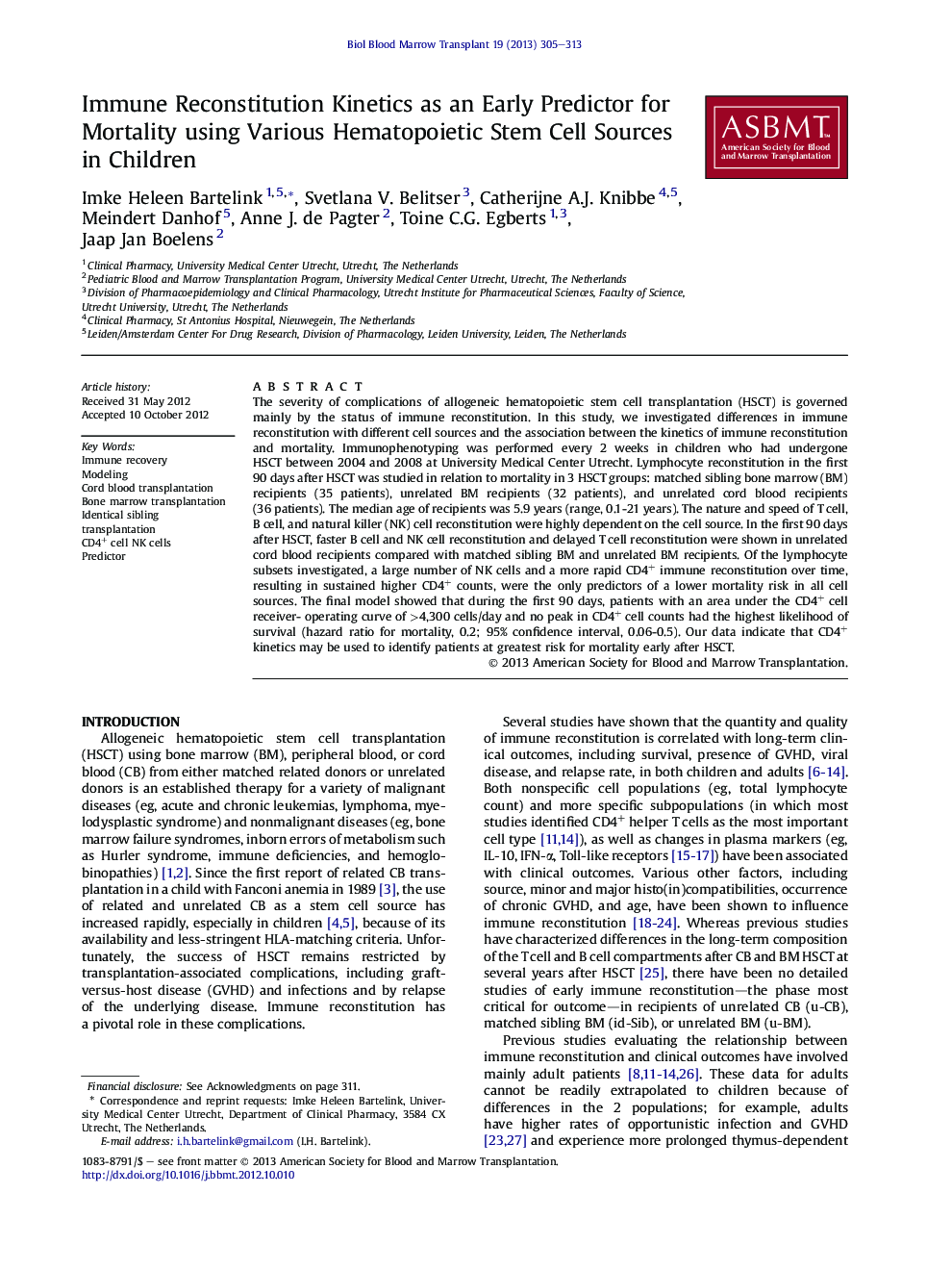| کد مقاله | کد نشریه | سال انتشار | مقاله انگلیسی | نسخه تمام متن |
|---|---|---|---|---|
| 2103139 | 1546296 | 2013 | 9 صفحه PDF | دانلود رایگان |

The severity of complications of allogeneic hematopoietic stem cell transplantation (HSCT) is governed mainly by the status of immune reconstitution. In this study, we investigated differences in immune reconstitution with different cell sources and the association between the kinetics of immune reconstitution and mortality. Immunophenotyping was performed every 2 weeks in children who had undergone HSCT between 2004 and 2008 at University Medical Center Utrecht. Lymphocyte reconstitution in the first 90 days after HSCT was studied in relation to mortality in 3 HSCT groups: matched sibling bone marrow (BM) recipients (35 patients), unrelated BM recipients (32 patients), and unrelated cord blood recipients (36 patients). The median age of recipients was 5.9 years (range, 0.1-21 years). The nature and speed of T cell, B cell, and natural killer (NK) cell reconstitution were highly dependent on the cell source. In the first 90 days after HSCT, faster B cell and NK cell reconstitution and delayed T cell reconstitution were shown in unrelated cord blood recipients compared with matched sibling BM and unrelated BM recipients. Of the lymphocyte subsets investigated, a large number of NK cells and a more rapid CD4+ immune reconstitution over time, resulting in sustained higher CD4+ counts, were the only predictors of a lower mortality risk in all cell sources. The final model showed that during the first 90 days, patients with an area under the CD4+ cell receiver- operating curve of >4,300 cells/day and no peak in CD4+ cell counts had the highest likelihood of survival (hazard ratio for mortality, 0.2; 95% confidence interval, 0.06-0.5). Our data indicate that CD4+ kinetics may be used to identify patients at greatest risk for mortality early after HSCT.
Journal: - Volume 19, Issue 2, February 2013, Pages 305–313